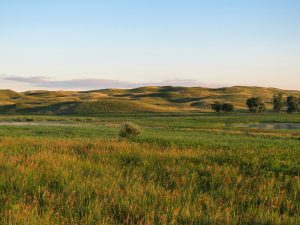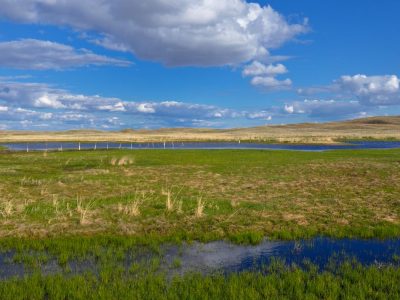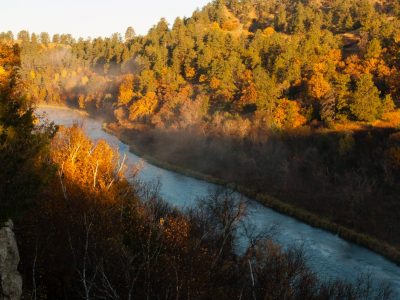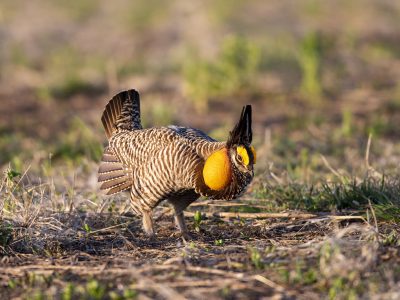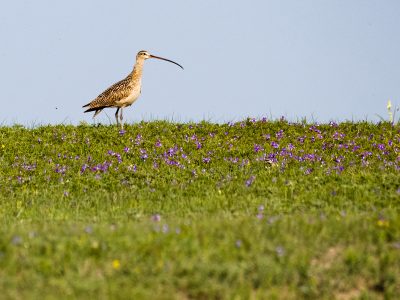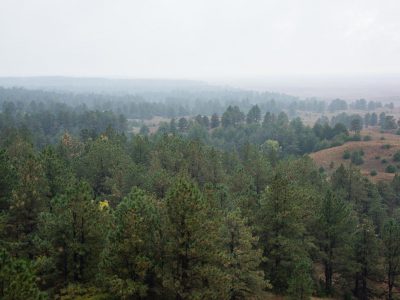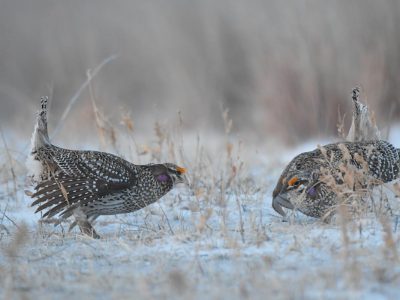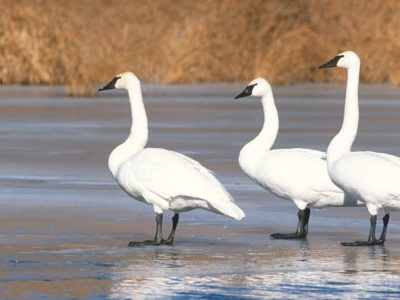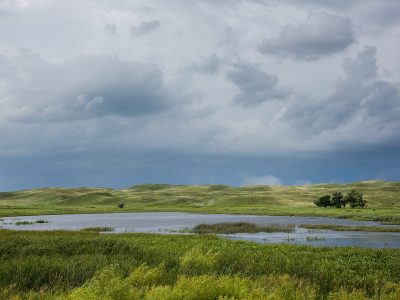The Nebraska Sandhills region represents the largest natural ecosystem in the state, covering 19,300 square miles, or almost a quarter of the state. It is also one of the largest remaining intact native grassland ecosystems in the country. It is a land with far fewer people than cattle, where the roads are few and where tourist facilities and accommodations are almost nonexistent. The roads that do exist are little-traveled and often consist of only slightly improved sandy trails leading to ranches.
Dunes of the Sandhills are aligned primarily in a northwesterly to southeasterly direction in accordance with prevailing winds and some reach over 400 feet in height. Where the region’s high-water table intersects the ground surface in Sandhill valleys, nearly 2,000 shallow lakes and over a million acres of wetlands have formed. Most lakes and large marshes are clustered near stream headwaters and in the western portion of the Sandhills. Only a few are over 1,000 acres in size, and all are shallow with the greatest depth less than 14 feet. The wetlands cycle water from the aquifer to the atmosphere through evapotranspiration. This moisture later falls as rainfall, creating an environment on the sandy dunes conducive to grassland establishment.
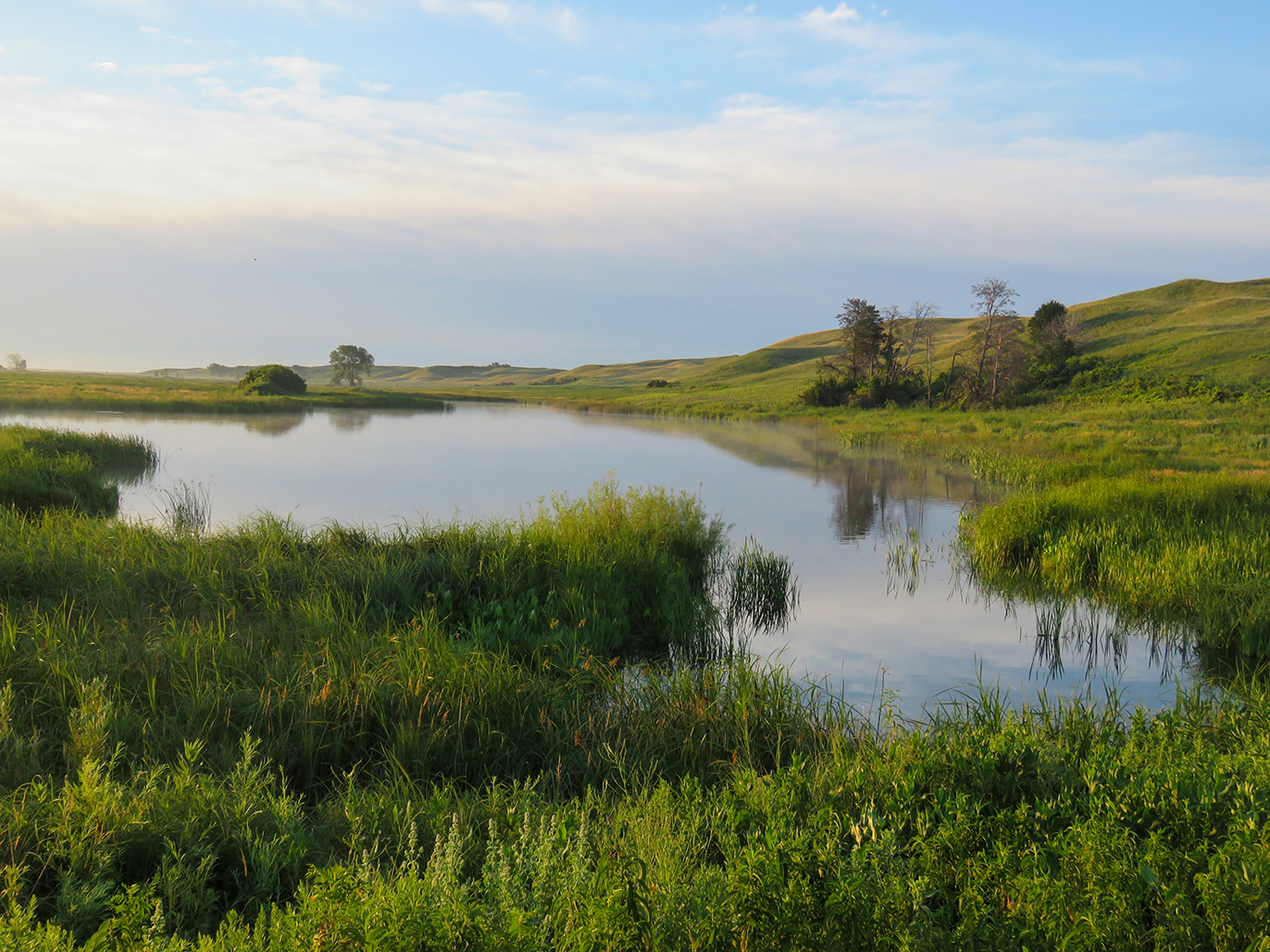
The Sandhills region is filled with breathtaking vistas, spectacular bird populations in the hundreds of lakes and marshes, and a pioneer spirit that requires everyone to help his or her neighbor, or indeed any stranger who happens to fall afoul of trouble while on the road. It is a land adapted to naturalists who would like to study virtually unaltered prairie ecosystems, and who are prepared to deal with nature on its own terms.
For some of the best Sandhills habitat and birding opportunities visit Crescent Lake National Wildlife Refuge (NWR) and Valentine NWR.
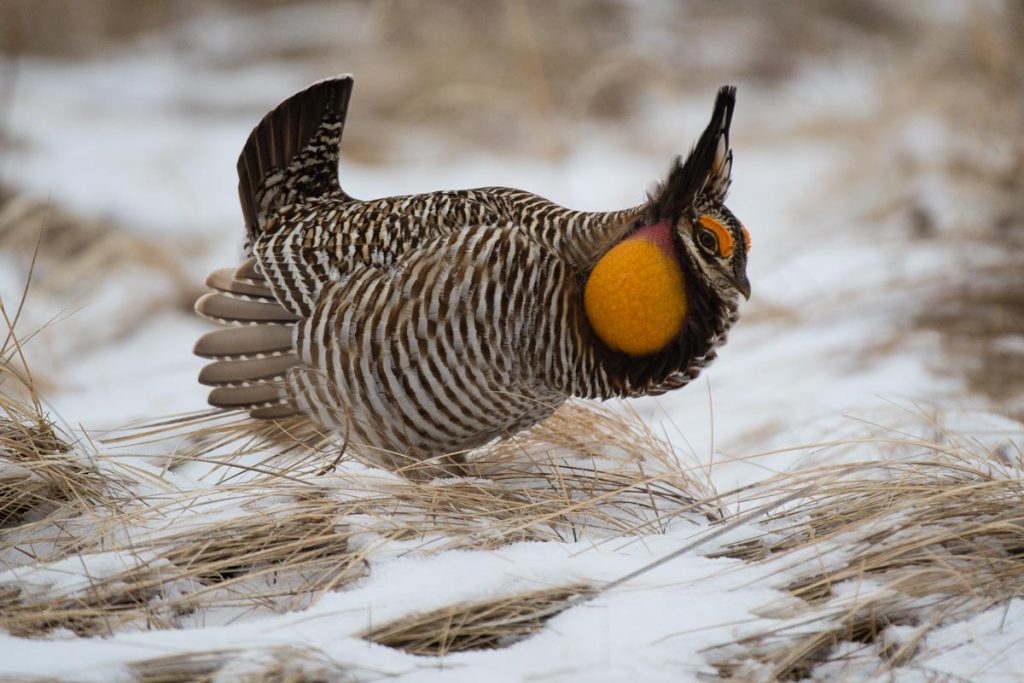
Characteristic birds
More than 300 species of resident and migratory birds have been documented in the Sandhills. The region is a stronghold for Sharp-tailed Grouse and Greater Prairie-Chicken and is considered to be an important breeding site for the world’s largest sandpiper, the Long-billed Curlew.
The Sandhills contain substantial breeding populations of Upland Sandpiper, Vesper Sparrow, Lark Bunting, Grasshopper Sparrow, and Western Meadowlark. The American Bird Conservancy has described the Nebraska Sandhills as the “best grassland bird place in the United States.”
Over a quarter million waterfowl have been recorded during May surveys, and the area is the most important breeding area for Mallards, Blue-winged Teal, and Northern Pintails south of the prairie pothole region. Other waterbirds that are common breeders in the Sandhills include Wilson’s Phalarope, American Avocet, Western Grebe, and Black Tern.
Although woodlands are mostly confined to stream corridors, woodland species such as Black-and-white Warbler and Rose-breasted Grosbeak are known to nest in the Sandhills.

